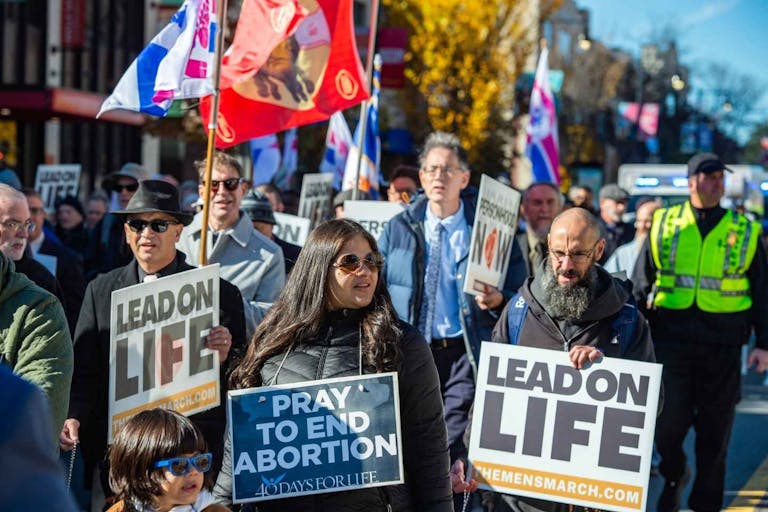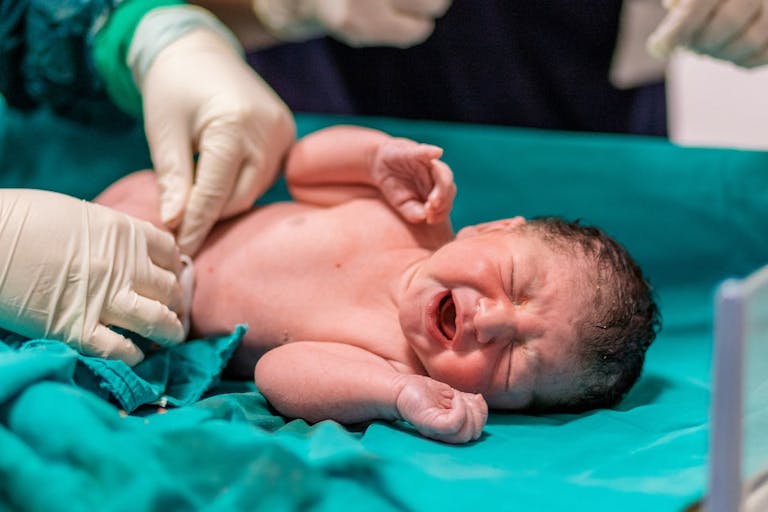
2025 Pro-Life Highlights: Celebrating a year of pro-life wins
Cassy Cooke
·
Abortions down an average of 5,000 monthly since Roe’s reversal, claims pro-abortion group
Data from a pro-abortion group shows significantly fewer abortions being committed in a post-Roe United States, potentially pointing to the effectiveness of pro-life laws.
According to the Society of Family Planning (SFP), there were 32,260 fewer abortions in the six months following Dobbs (July to December of 2022) when compared to the average monthly number of abortion in the preceding period. That translates into an average of 5,377 fewer abortions each month.
Released Tuesday, SFP’s report utilized data from “clinics, private medical offices, hospitals, and virtual clinic providers in the US known to offer abortion care in early 2022, adding new providers as we became aware.” The group was unable to capture “self-managed,” or illegal, abortions but nonetheless pointed to sizable changes following Dobbs, which allowed states to determine their own level of protections for preborn children.

As expected, states with more protective pro-life laws saw steep drops in the number of abortions while less restrictive states (monthly average of 1,858 more abortions) saw increases. Virtual clinics, meanwhile, saw an increase from 3,590 telehealth abortions to 8,540 by December.
The largest declines occurred in red states like Texas and Georgia (15,540 and 10,930 fewer abortions respectively) while the biggest increases occurred in states like Florida (7,190 more abortions), Illinois (6,840), and North Carolina (4,730). SFP noted that “[w]hile the structure of our data is unable to confirm this, the data suggests that many abortion seekers living in restrictive states may have traveled to other nearby states for care.”
States with the strongest protections for preborn children notably saw a drop to fewer than 10 abortions by December.
As Live Action News has noted, SFP has a history of pro-abortion bias:
The Society of Family Planning (SFP), an organization gradually gaining more notoriety, was founded in 2005 thanks to a generous contribution from the Packard Foundation, a donor involved in funding many global abortion efforts. SFP is heavily funded by both the Packard and (Warren) Buffett Foundations, which financed abortion pill manufacturer Danco Laboratories in its early days. Since 2009, the pro-abortion SFP has also “partnered with Wikipedia Education to train members to improve the quality of abortion and contraception information on Wikipedia,” according to their 2020 annual report.
And according to Charlotte Lozier Institute scholar Michael New, the post-Dobbs decrease in abortion is likely steeper than what SFP estimated:
As I have commented before, the #WeCount estimate likely understates the actual abortion decline resulting from state-level pro-life laws. This is for two reasons. First, some states were already enforcing strong pro-life laws prior to the Dobbs decision. Texas started enforcing a Heartbeat Act on September 1, 2021. My Charlotte Lozier Institute analysis of Texas birth data found that the Heartbeat Act alone was preventing approximately 1,000 abortions from taking place in Texas every month. Additionally, Oklahoma started enforcing a Heartbeat Act in May 2022, which also resulted in a large pre-Dobbs abortion decline.
Second, the #WeCount analysis fails to account for the fact that abortion numbers were already increasing in many politically liberal states prior to Dobbs. This is partly due to the trend in rising abortion rates that started in 2018, driven by an increase in chemical abortions. It is partly due to policy changes. In recent years, pro-life parental-involvement laws were repealed in Illinois and weakened in Massachusetts. Also, state Medicaid programs in Illinois and Maine have started covering elective abortions. Some of the abortion increases in these blue states is due to trends and policy changes. It is not all due to women from conservative states seeking abortions in states where abortion laws are more permissive.
The number of abortions could fall even further as pro-lifers continue to take advantage of the greater freedom Dobbs afforded for them to push for greater restrictions. Recent court decisions have also paired down access to abortion medication, adding even more hurdles for women who might want to obtain abortions in pro-life states.
Live Action News is pro-life news and commentary from a pro-life perspective.
Contact editor@liveaction.org for questions, corrections, or if you are seeking permission to reprint any Live Action News content.
Guest Articles: To submit a guest article to Live Action News, email editor@liveaction.org with an attached Word document of 800-1000 words. Please also attach any photos relevant to your submission if applicable. If your submission is accepted for publication, you will be notified within three weeks. Guest articles are not compensated (see our Open License Agreement). Thank you for your interest in Live Action News!

Cassy Cooke
·
Analysis
Nancy Flanders
·
Newsbreak
Angeline Tan
·
Human Interest
Nancy Flanders
·
Issues
Nancy Flanders
·
Pop Culture
Cassy Cooke
·
Human Interest
Sam Dorman
·
Activism
Sam Dorman
·
Activism
Sam Dorman
·
International
Sam Dorman
·
Activism
Sam Dorman
·